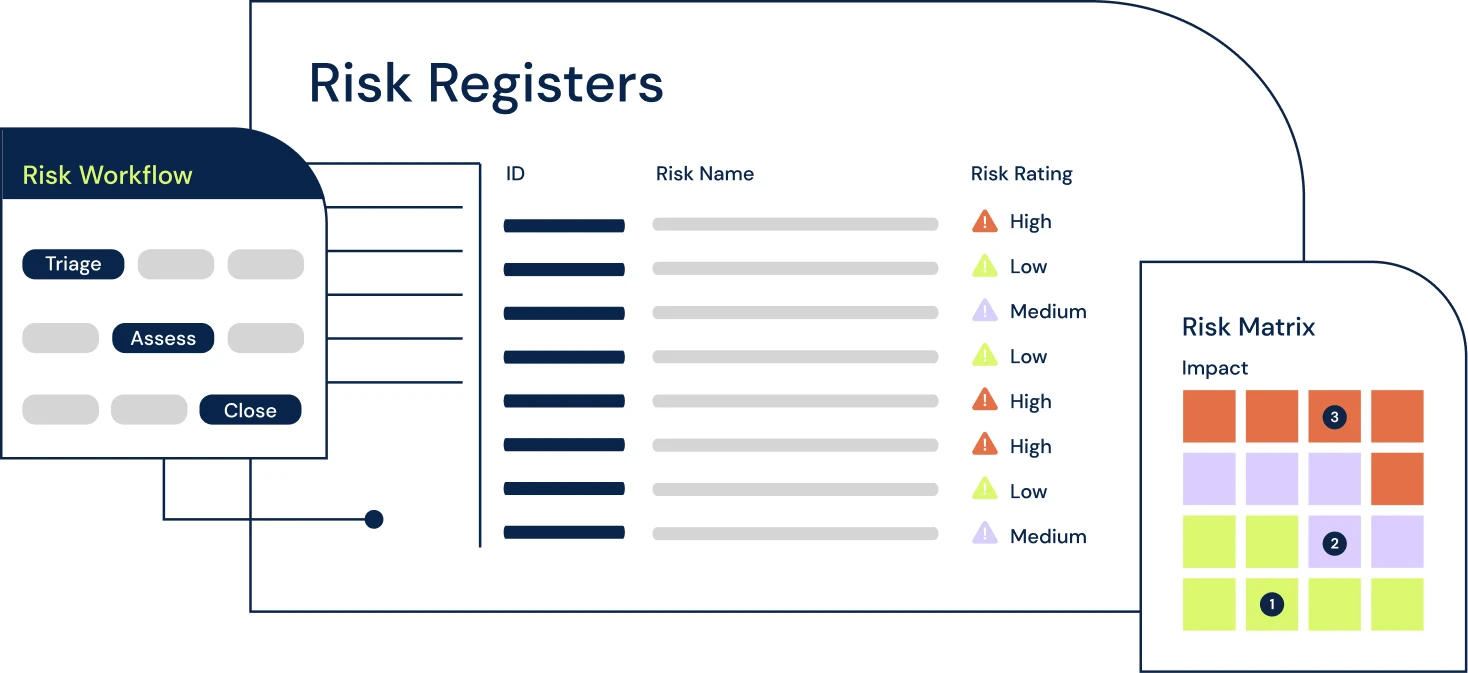
What is a risk register?
A risk register is a tool used to identify, assess, and prioritize risks in an organization. It typically includes a detailed description of each identified risk, an assessment of its likelihood and potential impact, and a plan for managing or mitigating the risk.
A risk register aims to help relevant stakeholders understand the potential risks associated with a process, project, system, or organization and develop strategies for dealing with those risks effectively.
Why is a risk register important?
A risk register is important because it helps project managers and other stakeholders identify, assess, and prioritize risks in a project or organization. By understanding the potential risks associated with a project or organization, it's possible to develop strategies for dealing with those risks effectively. This can help to ensure that the project or organization is successful and can help to avoid costly mistakes or unexpected delays.
In addition, a risk register can help to improve communication and collaboration among the different stakeholders involved in a project or organization. By providing a clear and detailed overview of the risks and the plans for managing them, a risk register can help to ensure that everyone is on the same page and working towards the same goals. This can help reduce confusion and misunderstandings and improve overall efficiency and effectiveness.
What does a risk register include?
A risk register typically includes the following information:
- A description of each identified risk, including the potential consequences if the risk were to occur.
An assessment of the likelihood and potential impact of each risk. This assessment can be based on a scale, such as low, medium, or high, or it can be based on more detailed criteria. - A plan for managing or mitigating each risk. This plan should include specific actions that can be taken to reduce the likelihood of the risk occurring or to minimize its potential impact if it does occur.
- Information on who is responsible for managing or mitigating each risk and when the actions specified in the risk management plan are expected to be completed.
- Regular updates on the status of each risk, including any changes in the likelihood or potential impact and any actions taken to manage or mitigate the risk.
- Any additional information relevant to understanding and managing the risks associated with the project or organization. This could include links to relevant documents, notes on stakeholder discussions, or other relevant information.
What are the steps to create a risk register?
Here are the important steps for creating a risk register
- Identify the risks: Start by identifying all the potential risks associated with your project or organization. This could include risks related to the project itself, as well as risks related to external factors, such as market conditions or changes in government regulations.
- Assess the likelihood and impact of each risk: For each identified risk, assess its likelihood of occurring and its potential impact on the project or organization. This will help you prioritize the risks and determine which ones need to be managed or mitigated more urgently.
- Develop a plan for managing each risk: Develop a plan for managing or mitigating each identified risk. This plan should include specific actions that can be taken to reduce the likelihood of the risk occurring or to minimize its potential impact if it does occur.
- Create the risk register: Once you have identified all the risks, assessed their likelihood and impact, and developed a plan for managing them, you can create the risk register. This can be done using a spreadsheet or other tool that allows you to organize and track the risks. The risk register should include a description of each risk, the likelihood and potential impact, and the plan for managing or mitigating it.
- Review and update the risk register regularly: As your project or organization progresses, it's important to regularly review and update the risk register. This will ensure that it remains accurate and reflects any changes in the risks associated with the project or organization.
Using the 6clicks risk register
6clicks provides a unified and simplified platform for risk management. You can easily add risks and import risks to the 6clicks risk register. The detailed risk register helps you capture all information about risk, including causes, impact, treatment status, risk rating, etc. Assigning an owner to each risk makes it easier to monitor and manage the risk.

Once you have listed all the risks in the risk register, the platform enables you to set up and automate risk assessments and treatments. Interested in knowing more about our platform for risk management and GRC?



